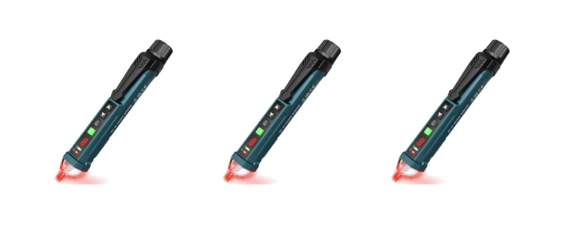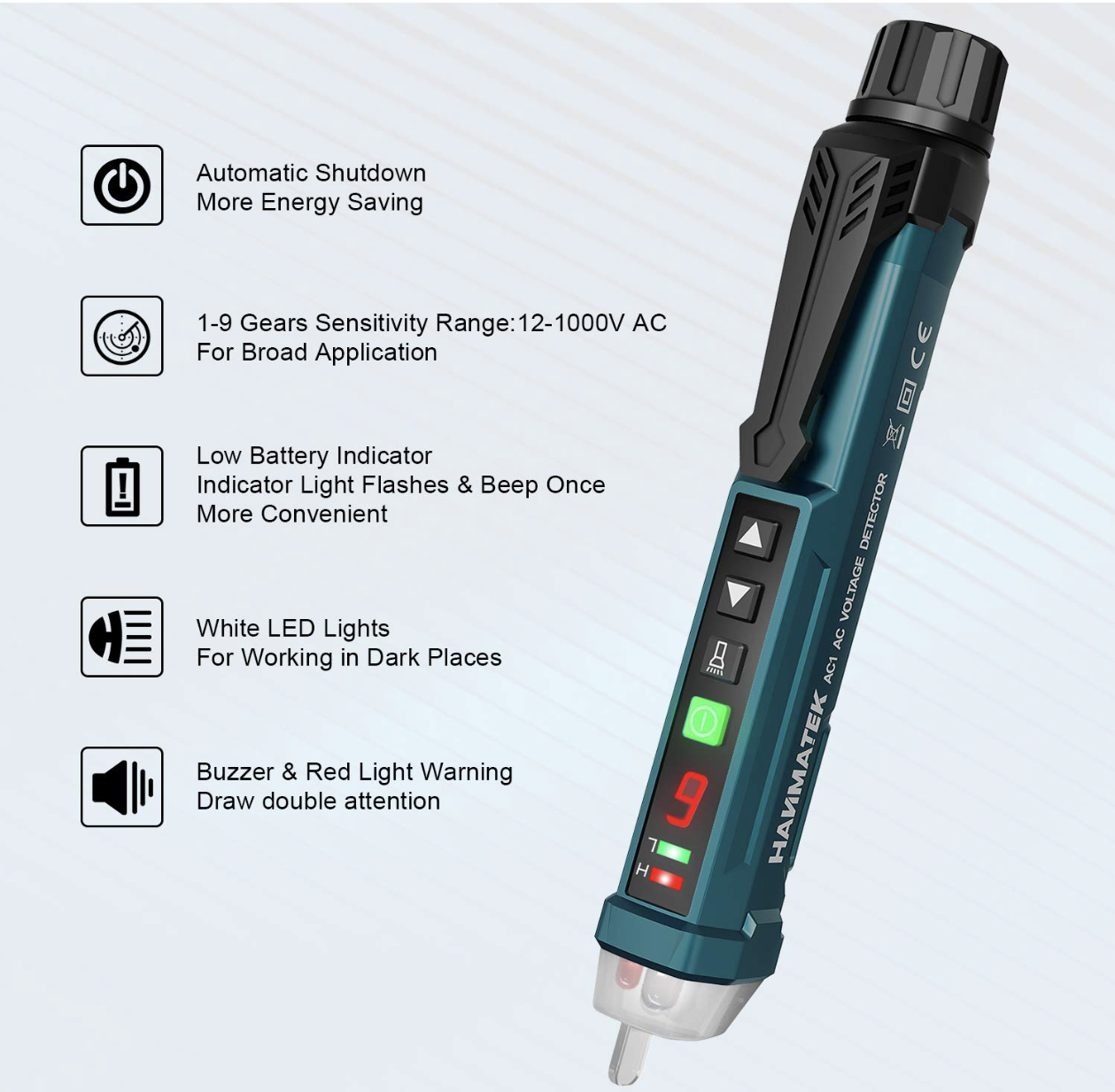Voltage detectors are indispensable tools for electricians, homeowners, and anyone working with electrical systems. Whether you’re checking for live wires, testing outlets, or troubleshooting electrical problems, a voltage detector is a must-have in your toolkit. In this guide, we’ll walk you through the basics of using a voltage detector safely and effectively.
The Non-Contact AC Voltage Detector under $10 is a good deal and a versatile and reliable tool designed for detecting the presence of AC voltage in various electrical applications. With its intuitive features and convenient design, this tester offers both accuracy and ease of use.
One of the standout features of this voltage tester is its NCV sensor, which allows users to detect AC voltage simply by pressing the power switch and bringing the probe close to the power socket or live line. This non-contact functionality ensures safety and efficiency, eliminating the need for direct contact with electrical sources.
The tester’s alarm function provides clear visual and auditory signals when AC voltage is detected. The sensor indicator lamp blinks, and the corresponding signal strength indicator lights up to indicate the detected signal strength. With adjustable measurement range options, users can freely switch between 12-1000V and 90-1000V detection ranges, enhancing versatility and accuracy in different electrical scenarios.
Moreover, the inclusion of an LED flashlight function adds practicality to the tester, making it suitable for use in low-light conditions or emergencies. The flashlight can serve as an emergency light when needed, further increasing the tester’s utility.
Another noteworthy feature is the auto power-off function, which conserves battery life by shutting down the tester automatically after 3 minutes of inactivity and non-detection of AC voltage. This ensures prolonged battery usage and enhances the overall longevity of the tester.
The package comes complete with a contactless stylus, a user manual for easy reference, and two 1.5V AAA batteries, providing everything needed for immediate use out of the box.
How to Use Non-Contact Voltage Detector
- Insert the battery to power the non-contact voltage detector.
- Once the battery is inserted, turn on the power.
- Choose an object for the voltage detector. Any object you choose that has electricity will trigger the sound and the beam of the voltage detector.
- In case you don’t find any electrical sign in an obvious electrical object, you can adjust the level of sensitivity. This happens because not all objects have the same level of voltage. By knowing the level of voltage presence on the object you investigate you are going to be able to have proper anticipation toward it.
Buy Your Own Non-Contact Voltage Detector
Non-Contact AC Voltage Detector impresses with its comprehensive set of features, including NCV sensor technology, adjustable measurement range, LED flashlight function, and auto power-off capability. Whether you’re a professional electrician or a DIY enthusiast, this tester offers reliability, convenience, and safety for all your electrical testing needs.





